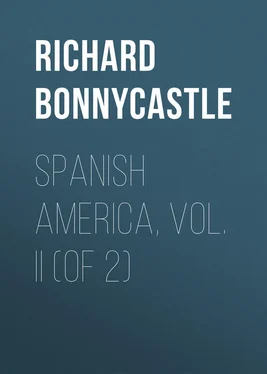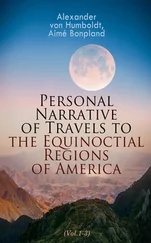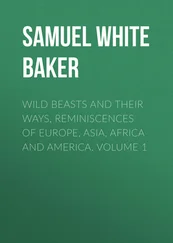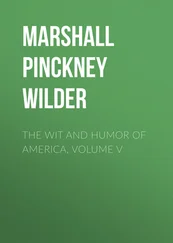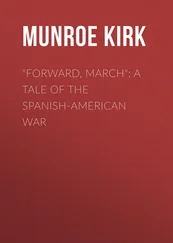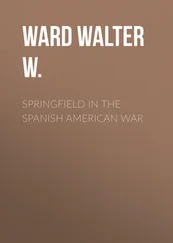Richard Bonnycastle - Spanish America, Vol. II (of 2)
Здесь есть возможность читать онлайн «Richard Bonnycastle - Spanish America, Vol. II (of 2)» — ознакомительный отрывок электронной книги совершенно бесплатно, а после прочтения отрывка купить полную версию. В некоторых случаях можно слушать аудио, скачать через торрент в формате fb2 и присутствует краткое содержание. Жанр: foreign_antique, foreign_prose, на английском языке. Описание произведения, (предисловие) а так же отзывы посетителей доступны на портале библиотеки ЛибКат.
- Название:Spanish America, Vol. II (of 2)
- Автор:
- Жанр:
- Год:неизвестен
- ISBN:нет данных
- Рейтинг книги:4 / 5. Голосов: 1
-
Избранное:Добавить в избранное
- Отзывы:
-
Ваша оценка:
- 80
- 1
- 2
- 3
- 4
- 5
Spanish America, Vol. II (of 2): краткое содержание, описание и аннотация
Предлагаем к чтению аннотацию, описание, краткое содержание или предисловие (зависит от того, что написал сам автор книги «Spanish America, Vol. II (of 2)»). Если вы не нашли необходимую информацию о книге — напишите в комментариях, мы постараемся отыскать её.
Spanish America, Vol. II (of 2) — читать онлайн ознакомительный отрывок
Ниже представлен текст книги, разбитый по страницам. Система сохранения места последней прочитанной страницы, позволяет с удобством читать онлайн бесплатно книгу «Spanish America, Vol. II (of 2)», без необходимости каждый раз заново искать на чём Вы остановились. Поставьте закладку, и сможете в любой момент перейти на страницу, на которой закончили чтение.
Интервал:
Закладка:
The Guayquerias will be described in speaking of the town of Cumana which they chiefly inhabit.
A tribe called the Quaquas are mixed with the Chaymas in the missions, and inhabit an immense tract of country as far as the main Cordilleras of the Andes.
The Cumanagotoes , to the amount of 26,000, live in the west of Cumana, in the missions of Piritoo. The chief mission of the Piritoos (so called on account of a thorny palm of which pipes are made) was founded in 1556, and was named La Conception.
In this country, the Caribbees are spread over a great extent, existing also in French Guyana, and in Trinidad; and the Guarivas, as well as many others, are Carib tribes. A few missions are found in the great plains, in which some of these people are settled. The Caribs are distinguished in the Caraccas by their great size.
A tribe on the banks of the Orinoco, named the Otomacs , raise their dead at the end of twelve months, and place the bones in a general burying place; they cover their grain, fish, vegetables, &c., with earth, to preserve them, and devour their food mingled with the soil in which it has lain. The substances become quite hard in these pits, by the incrustations of the soil, and some of them are said to eat a pound and a half of the earth in a day. The Indians of all these tribes, who prefer a wandering life to the subjected state of their brethren in the missions, are frequently attacked in the night by the monks and their followers, and made prisoners. When the missionaries give the young people to the converted Indians as slaves, in which capacity they remain until of an age to marry, in consequence of this, the mission Indians frequently instigate the priests to attack these unfortunate people, being eager to possess them. Those who are thus taken are called Poitos, and in general consist only of children, torn with unrelenting severity from the arms of their terrified parents. The motive assigned by the monks for such arbitrary measures, is the hope of their ultimate conversion.
Lakes – The lakes of Caraccas are chiefly those of Valencia and Maracaybo. Maracaybo is a body of water of an oval form, lying in a north and south direction, and communicating with the gulf of Venezuela by a very narrow channel. In length it is 150 miles, in breadth 90, and 450 in circumference; its waters being always fresh, excepting when violent storms force the salt waters of the gulf into it. There is generally a considerable undulation on its surface, and in some winds, particularly those from the north, the waves rise to a great height. The depth of this lake is very profound, and it is navigable for vessels of the greatest burthen.
The produce of the interior is conveyed by the rivers which feed it, to the town of Maracaybo, and thence shipped for Europe or the adjoining colonies; and the various sorts of fish, common to the American rivers, are to be found in this lake.
The shores in the immediate vicinity of its waters, are unhealthy, owing to the vapours arising in the night after the great heat of the day.
When the Spaniards first landed in this country, they observed several villages built in the lake, which is the mode adopted by the Indians at present, considering this plan as the healthiest.
The appearance of one of these little towns amid the waters, caused the Spanish adventurers to name it Little Venice, or Venezuela, which title was afterwards transferred to the whole province in the neighbourhood. Four of these villages still remain, and are under the government of a monk, who has a church, and the spiritual charge of these people.
The principal employment of the Indians of these towns is fishing and catching the aquatic birds which frequent the lake.
To the north-west of Lake Maracaybo, is a vein, or mine of mineral pitch, (used by mixing it with grease, to grave vessels,) which is of such an inflammable nature, that during the hot weather, and particularly at night, corruscations are seen arising from its surface, which have the appearance of quickly repeated lightnings. The Indians and Spaniards, who navigate the vessels and canoes of the lake, called them St. Antony's Lanthorns, or the Lanthorns of Maracaybo, as they serve them to steer by during the dark nights, so prevalent in the torrid zone.
The lake of Valencia , which though not so extensive as the last we have described, is far more beautiful and useful. Its banks are fertile and healthy, and clothed with the most luxurious vegetation. It is situated three miles from the city of Valencia, and eighteen from the sea, from which it is separated by inaccessible mountains; the lake of Valencia is of an oblong form, stretching north-east and south-west, and is forty miles in length and twelve in breadth, in a valley surrounded by very high and steep land, excepting on the west.
This extraordinary lake receives the waters of twenty rivers, and has no visible outlet. It has been diminishing for twenty years, and its waters are still receding, leaving behind them a rich and productive soil, but at the same time an unhealthy air; and the cultivators are in some parts under the necessity, from the want of water, of drawing off the neighbouring streams to irrigate their plantations.
The eastern side is laid out in tobacco grounds, which occupy 15,000 people, who are paid by the crown; and the islands in which it abounds are highly fertile, the largest called Caratapona, being well populated.
The woods near this lake are famous for the diversity and beauty of the birds, and its waters furnish fish, and the guanas, or edible lizard, which are considered as a very delicious food; of these, two species are common to the lake. The water of Lake Valencia is not so good for drinking as that of Maracaybo, being thick and nauseous.
This lake bears the Indian name of Tacarigua, as does a bay or lake on the coast, which is situated a league and a half from the mouth of the river Tuy, of a circular form, and is twenty-one miles in length from the sea on the north-east to the south-east, it abounds in fish, and is remarkable for the great number of alligators it contains.
The lake of Parina , or Paranapitinca , in Guiana is said to be an oblong sheet of water, 100 miles in length, and 50 broad, in an island of which is a rock of glittering mica, celebrated as having been the seat of El Dorado, a supposititious city, the streets of which were paved with gold, alluded to by Milton in his Paradise Lost.
"And yet unspoil'd Guiana
Whose great city Geryon's sons
Call El Dorado."
This lake is in 3° 40' north latitude, and 45° 20' west longitude, and gives birth to a large river, called Rio Blanco, or Parima, which we have before spoken of.
PROVINCE OF NEW ANDALUSIA
This province, which is also known by the names of Cumana and Paria, is bounded on the north by the Caribbean sea; on the east by the Atlantic ocean; west by Barcelona, and south by Spanish Guiana, or the river Orinoco.
The government of Cumana usually includes the adjacent province of New Barcelona. We shall therefore describe these two under the same head, mentioning however the distinct boundaries of —
NEW BARCELONA,
Which is limited on the north by the Caribbean sea; east by Cumana; west by Venezuela, or Caraccas Proper, and south by Guiana and the Orinoco.
The great extent of the territory of Cumana and Barcelona, its being washed on two of its sides by the ocean, and by the broad expanse of the Orinoco on the third, render it one of the most important governments of the captain-generalship.
History, &c. – The eastern part of New Andalusia is famous as having been the scene of the first continental discoveries of Columbus. The mouths of the Orinoco and the adjacent shores of Paria were visited by him during his third voyage. The first land discovered during this expedition, was however not the continent, but the island of Trinidad, which was so named because the admiral had vowed to give the appellation of the Trinity to the first land he should see, and also because three mountains were observed at the same moment. This happened on Tuesday, 31st July, 1498, and having but one cask of water left, he landed at Punta de la Playa, where he procured the necessary supply.
Читать дальшеИнтервал:
Закладка:
Похожие книги на «Spanish America, Vol. II (of 2)»
Представляем Вашему вниманию похожие книги на «Spanish America, Vol. II (of 2)» списком для выбора. Мы отобрали схожую по названию и смыслу литературу в надежде предоставить читателям больше вариантов отыскать новые, интересные, ещё непрочитанные произведения.
Обсуждение, отзывы о книге «Spanish America, Vol. II (of 2)» и просто собственные мнения читателей. Оставьте ваши комментарии, напишите, что Вы думаете о произведении, его смысле или главных героях. Укажите что конкретно понравилось, а что нет, и почему Вы так считаете.
